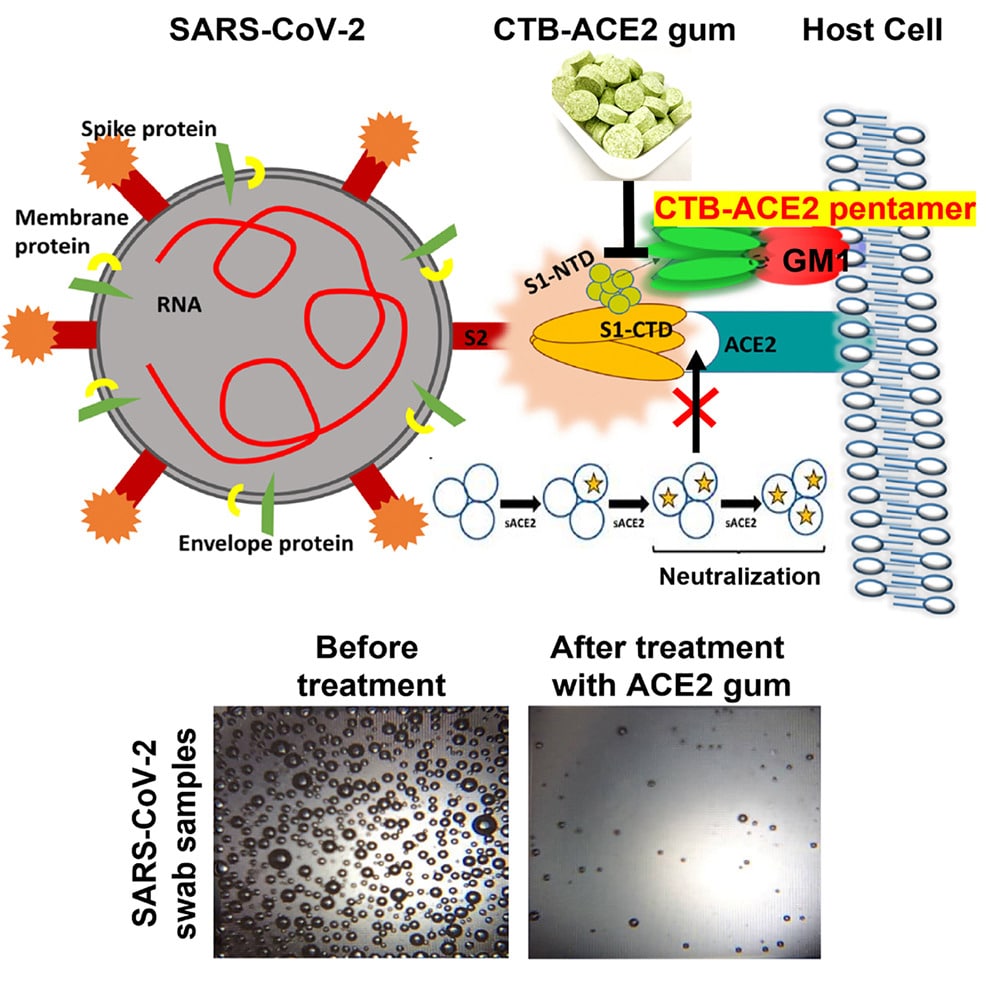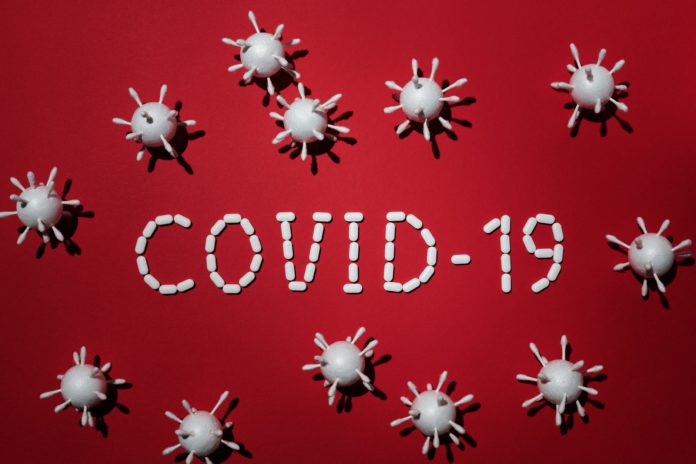Vaccinations for COVID-19 have helped change the course of the pandemic but are still not successful in stopping transmission. Even fully vaccinated people can still become infected with SARS-CoV-2 and, according to recent research, can carry a viral load similar to those who are unvaccinated.
A new study suggested that chewing gum laced with a plant-grown protein could serve as a potential “trap” for the SARS-CoV-2 virus. It could reduce viral load in saliva and potentially reduce transmission.
The work, led by Henry Daniell at Penn’s School of Dental Medicine and performed in collaboration with scientists at the Perelman School of Medicine and School of Veterinary Medicine, as well as at The Wistar Institute and Fraunhofer USA, could lead to a low-cost tool in the arsenal against the COVID-19 pandemic. Their study was published in the journal Molecular Therapy.
“SARS-CoV-2 replicates in the salivary glands, and we know that when someone who is infected sneezes, coughs, or speaks some of that virus can be expelled and reach others,” says Daniell. “This gum offers an opportunity to neutralize the virus in the saliva, giving us a simple way to possibly cut down on a source of disease transmission.”
Before the pandemic, Daniell studied the angiotensin-converting enzyme 2 (ACE2) protein in the context of treating hypertension. Using a patented plant-based production system, his lab had grown this protein and many others that may have therapeutic potential.
Daniell’s past work on ACE2 proved advantageous in the context of the COVID-19 pandemic.
The receptor for ACE2 on human cells also happens to bind the SARS-CoV-2 spike protein. Other research groups have shown that injections of ACE2 can reduce viral load in people with severe infections.
Meanwhile, another line of work by Daniell and Penn Dental Medicine colleague Hyun (Michel) Koo has involved research in developing a chewing gum infused with plant-grown proteins to disrupt dental plaque. Pairing his insights about ACE2 with this technology, Daniell wondered if such a gum, infused with plant-grown ACE2 proteins, could neutralize SARS-CoV-2 in the oral cavity.
To find out, he reached out to Ronald Collman at Penn Medicine. He is a virologist and pulmonary and critical care doctor. His team had been collecting blood, nasal swabs, saliva, and other biospecimens from COVID patients since the early stages of the pandemic for scientific research.
“Henry contacted me and asked if we had samples to test his approach, what kind of samples would be appropriate to test, and whether we could internally validate the level of SARS-CoV-2 virus in the saliva samples,” Collman says. “That led to a cross-school collaboration building on our microbiome studies.”
The team grew ACE2 in plants to test the chewing gum, paired with another compound that enables the protein to cross mucosal barriers and facilitates binding. It incorporated the resulting plant material into cinnamon-flavored gum tablets. Incubating samples obtained from nasopharyngeal swabs from COVID-positive patients with the gum showed that the ACE2 present could neutralize SARS-CoV-2 viruses.
Others followed those initial investigations at The Wistar Institute and Penn Vet, in which viruses, less-pathogenic than SARS-CoV-2, were modified to express the SARS-CoV-2 spike protein. The scientists observed that the gum largely prevented the viruses or viral particles from entering cells, either by blocking the ACE2 receptor or binding directly to the spike protein.
Finally, the team exposed saliva samples from COVID-19 patients to the ACE2 gum and found that levels of viral RNA fell so dramatically to be almost undetectable.

The research team is currently obtaining permission to conduct a clinical trial to evaluate whether the approach is safe and effective when tested in people infected with SARS-CoV-2.
“Henry’s approach of making the proteins in plants and using them orally is inexpensive, hopefully scalable; it really is clever,” Collman says.
The research is still in the early stages of development. But suppose the clinical trials prove the gum is safe and effective. In that case, it could be given to patients whose infection status is unknown or even for a dental check-up when masks need to be removed to reduce the likelihood of passing the virus to caregivers.
“We are already using masks and other physical barriers to reduce the chance of transmission,” says Daniell. “This gum could be used as an additional tool in that fight.”
Journal Reference
- Henry Daniell, Smruti K. Nair, Nardana Esmaeili, Geetanjali Wakade, Naila Shahid, Prem Kumar Ganesan, Md Reyazul Islam, Ariel Shepley-McTaggart, Sheng Feng, Ebony N. Gary, Ali R. Ali, Manunya Nuth, Selene Nunez Cruz, Jevon Graham-Wooten, Stephen J. Streatfield, Ruben Montoya-Lopez, Paul Kaznica, Margaret Mawson, Brian J. Green, Robert Ricciardi, Michael Milone, Ronald N. Harty, Ping Wang, David B. Weiner, Kenneth B. Margulies, Ronald G. Collman. Debulking SARS-CoV-2 in saliva using angiotensin converting enzyme 2 in chewing gum to decrease oral virus transmission and infection, Molecular Therapy, November 10, 2021; DOI: 10.1016/j.ymthe.2021.11.008
